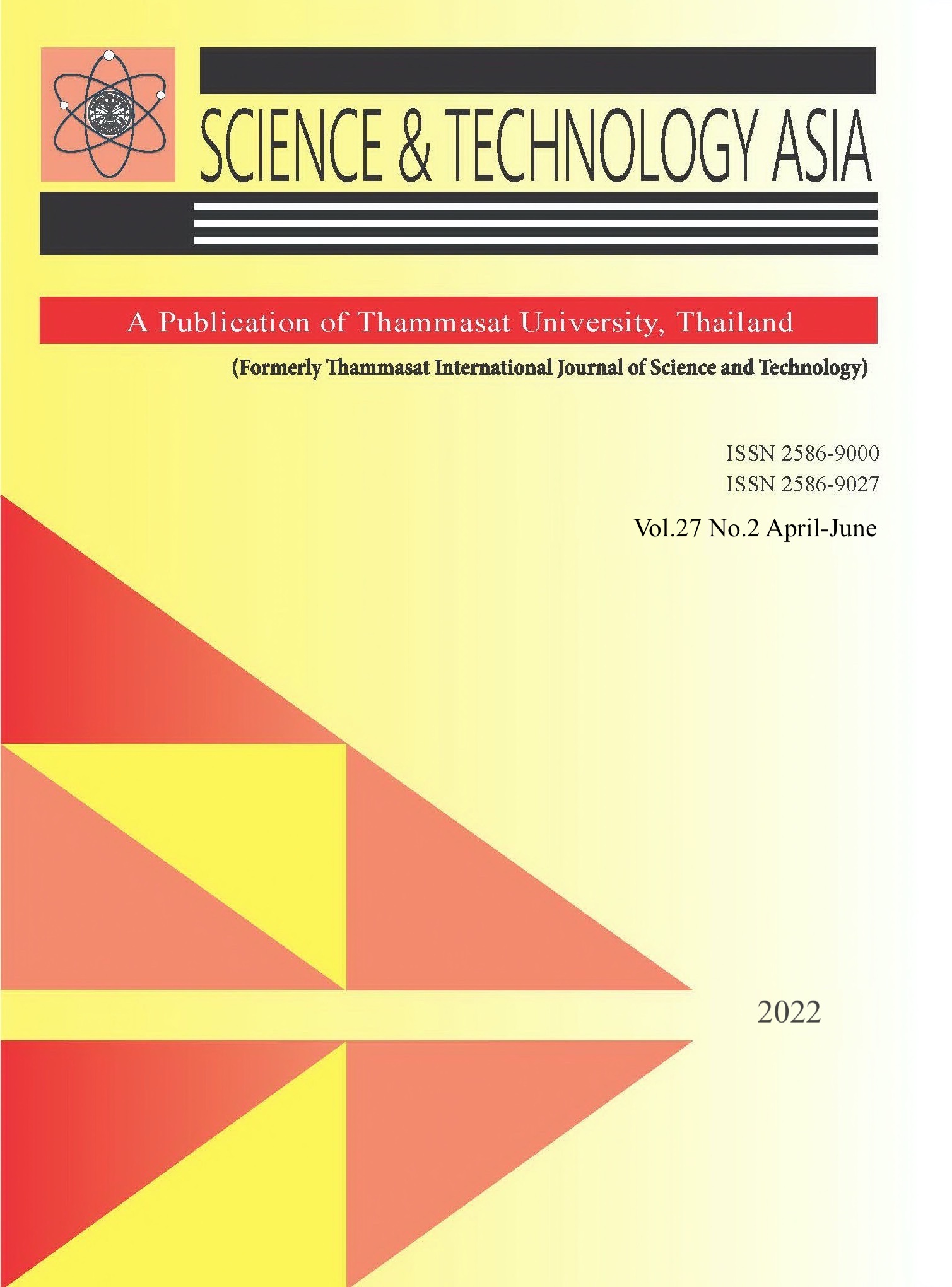Removal of Lead(II) from Aqueous Solution Using Fibroin from Cocoon Waste as a Potential Biosorbent
Main Article Content
Abstract
The effective removal of heavy metals from aqueous wastes is an important issue for many industrialized countries. In this study, removal of Pb(II) from aqueous solutions was studied using fibroin from two cocoon silk species: TxC Cocoon (TxC) and Lueang Surin Cocoon (LSC). The effect of various operational parameters i.e., adsorbent dosage, pH, contact time and solute concentration was investigated. The results, LSC showed higher adsorption efficiency of Pb(II) metal than TxC in all the parameters, possibly because LSC contained higher fibroin content. The optimum set of conditions for adsorption of Pb(II) ion was found to be adsorbent dosage 0.25 g, pH 6, contact time 100 min and initial concentration 50 mg/L, obeyed pseudo second order kinetic model. The adsorption data conformed to both the Langmuir and the Freundlich isotherms, but fitted best into the Langmuir model. The R2 values for Langmuir equation were 0.9997 and 0.9996 for TxC and LSC, respectively. The Langmuir monolayer adsorption capacity values of the cocoons were calculated to be 51.813 mg/g and 52.352 mg/g for TxC and LSC, respectively. The results indicated that the fibroin from both cocoon wastes can be used to effectively adsorb Pb(II) ions as low-cost biosorbents from wastewater treatment plants.
Article Details

This work is licensed under a Creative Commons Attribution-NonCommercial-NoDerivatives 4.0 International License.


